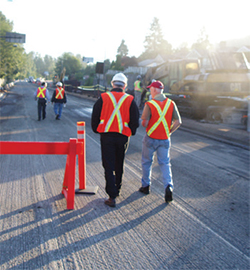Emergency Management
Transcript:
The Canada Energy Regulator is the safety regulator for companies whose pipelines cross into other provinces or countries.
Companies are required to do regular monitoring. This could include activities such as: walking the line, 24/7 pressure monitorin and flyovers.
Each year, the CER checks to make sure companies are keeping pipelines safe by doing inspections, along with in-depth safety audits. Yet even with all these precautions, an emergency could still happen.
In an emergency, we are ready to respond 24 hours a day, 7 days a week, 365 days a year. The CER maintains an Emergency Operations Centre at its headquarters in Calgary which is activated in an emergency.
Usually, we can have inspection officers on scene within hours of being notified of an incident.
The CER oversees the company’s response to an emergency to make sure they are prioritizing people safety and doing everything they can to bring the incident under control.
During an emergency we work hard to keep the surrounding communities and Canadians informed about what is happening.
We provide ongoing safety information and updates as we get new information.
The CER also uses social media during an emergency to make sure Canadians have the most up-to-date information.
Once the emergency is under control, the CER will investigate what happened. Another government department, the Transportation Safety Board may also investigate. The investigation looks at what went wrong and develop ways for the company to make sure the same thing never happens again.
If we find the company did not follow the rules and caused the emergency, we will take strong enforcement action which can range from fines to revoking the company’s operating license.
The CER requires the polluter to pay for any damage that has been caused by their pipeline.
We will never allow a pipeline to start back up until the company can prove it can do so safely, protecting people and the environment.
We have strict environmental standards that outline how a company must clean up the environment after a spill. The CER will oversee the clean up until it is complete.
For more information about the CER, please see our other videos, visit our website, or contact the CER directly.
 The companies under our watch are responsible for how they operate. We expect them
to do everything they can to keep things safe. This includes being
ready in case there is an emergency.
The companies under our watch are responsible for how they operate. We expect them
to do everything they can to keep things safe. This includes being
ready in case there is an emergency.
Companies must have detailed plans showing what they would do in an emergency. We review each plan to make sure it covers all the bases. We also require companies to share their plans publicly.
The most important thing in any emergency is to protect people and the environment. In an emergency, all levels of government work together to respond. We regularly practice with companies on how we will work together in advance so everyone knows their role.
After an emergency is over, the company is responsible for any clean-up required, big or small. We expect the company to fully restore any damage to the environment and we monitor them to make sure they do so.
- Date modified: